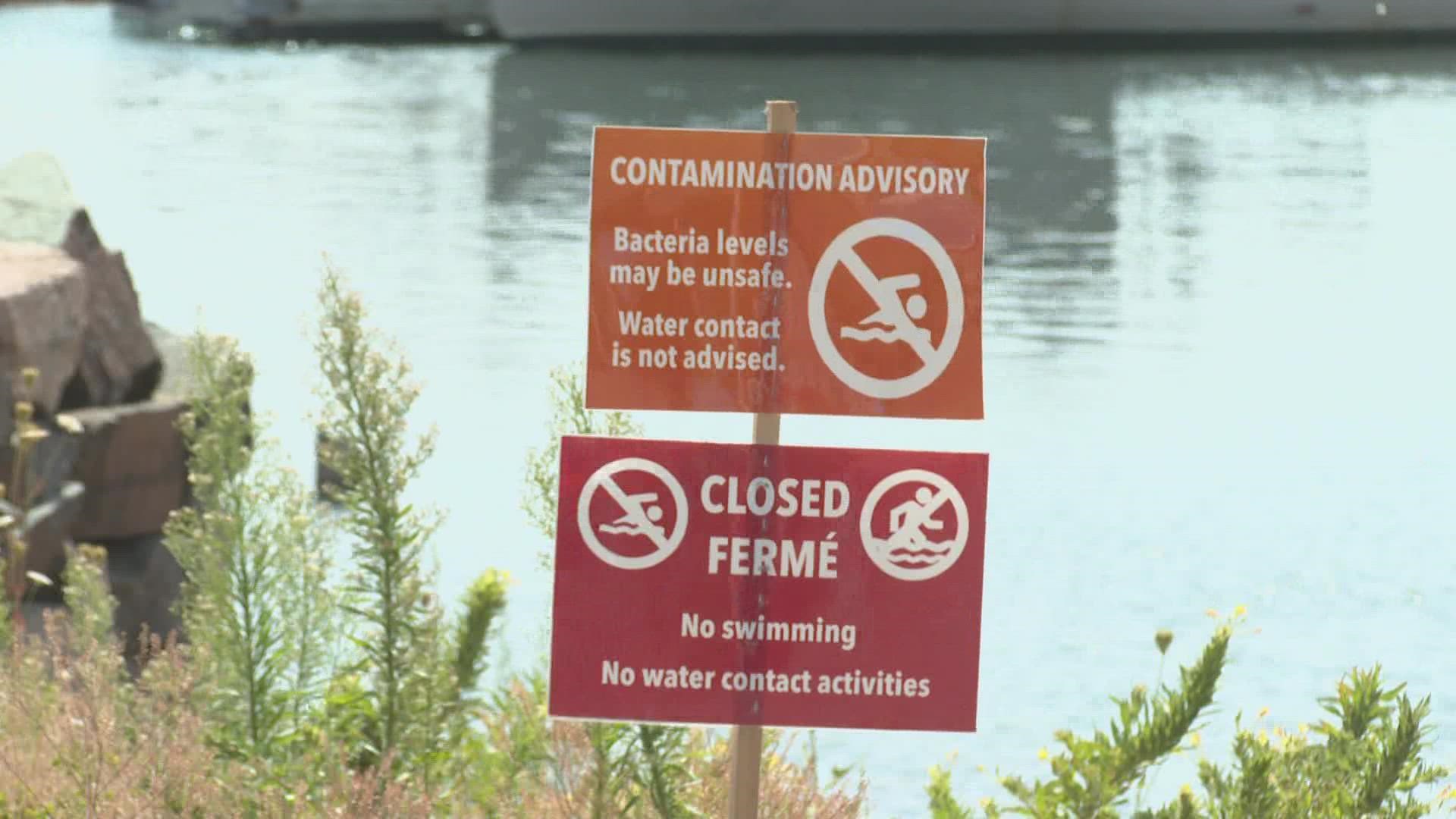MAINE, USA — For the fifth time this summer, Wells Harbor is closed to swimming and other water contact activities following a sewer break on a line that runs through the harbor.
"Nature didn't want that pipe to be there," Wells Sanitary District Superintendent Nick Rico said.
Rico says a sewer line was buried below Wells Harbor in 1978, but it's becoming unreliable. According to Rico, the initial break this summer happened below the sand in the harbor, but the pipe began floating and became susceptible to being hit by a boat.
He says the pipe was likely struck twice by boats causing leaks. Rico says the two most recent breaks are most likely caused by shifting tides and pressure underwater. He says all the repairs have caused that pipe to weaken.
"Once that pipe was cut and had fittings put on it, it became the weakest link. So whether it's a boat strike or more likely stress on the pipe from tidal action, that's pulled that off the old pipe there," Rico said, as he showed the damaged fitting that's been removed from the water.
According to Rico, the Wells Sanitary District already has a $1.5 million pipe replacement project planned for the line through Wells Harbor. Rico says, however, he's working to move that start date as soon as the contractor is available to begin work.
Wells isn't the only town navigating a sewage spill, however. In Scarborough, crews worked overnight on Tuesday to fix a leaking sewer pipe below the Eastern Trail.
"The culvert here has shifted, and exerted some undue stress on the pipe and caused a break in the pipe," Scarborough Sanitary District Superintendent David Hughes said.
Hughes estimates that roughly 10,000 gallons of sewage spilled into the Scarborough Marsh and nearby rivers. That has prompted the Maine Department of Marine Resources to close the area to shellfish harvesting until Aug. 30.
"There was a big puddle right on the ground here, and you could actually see when the pumps would turn on, the puddle would get bigger, and then the pumps would turn off and puddle would dissipate," Hughes said.
According to Hughes, it took crews roughly 12 hours to repair the broken pipe and reopen the portion of the Eastern Trail where the break happened.
Hughes says, however, that they were able to repair the pipe with a permanent fix, and will not need to make continuous repairs to the area.
"It's all good to go. It should be good for the next 50, 100 years," Hughes said.

